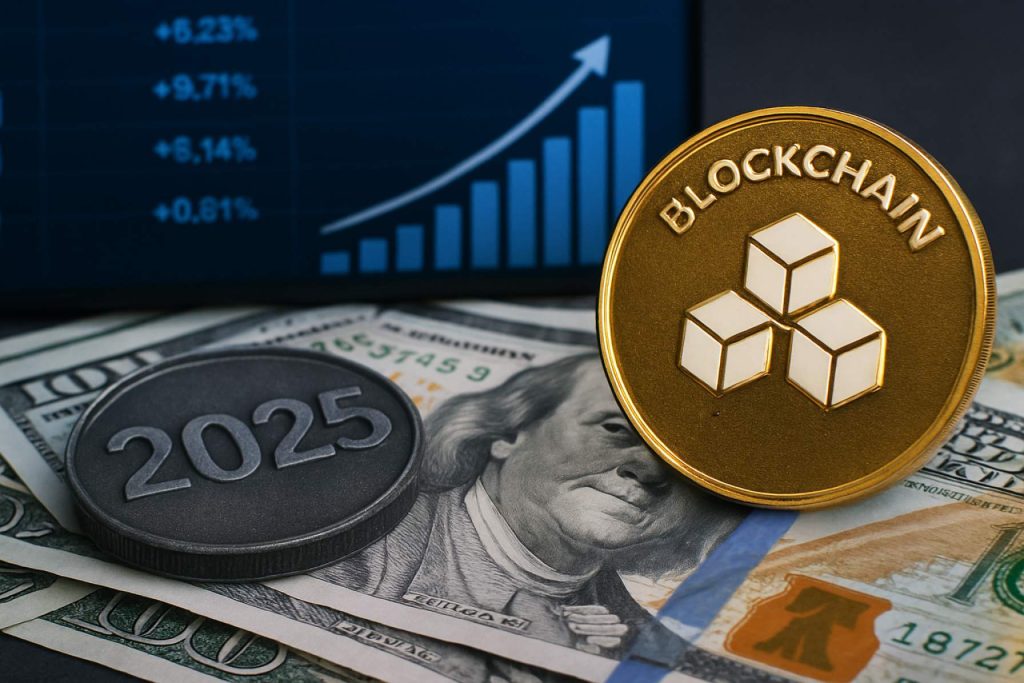
Tokenized Asset Securitization Industry Report 2025: Unveiling Market Dynamics, Growth Projections, and Strategic Opportunities for the Next 5 Years
- Executive Summary & Market Overview
- Key Technology Trends in Tokenized Asset Securitization
- Competitive Landscape and Leading Players
- Market Growth Forecasts (2025–2030): CAGR, Market Size, and Adoption Rates
- Regional Analysis: North America, Europe, Asia-Pacific, and Emerging Markets
- Future Outlook: Innovations, Regulatory Shifts, and Market Expansion
- Challenges and Opportunities: Navigating Risks, Compliance, and New Revenue Streams
- Sources & References
Executive Summary & Market Overview
Tokenized asset securitization refers to the process of converting rights to an asset—such as real estate, commodities, equities, or debt—into digital tokens on a blockchain or distributed ledger. These tokens represent fractional ownership and can be traded, transferred, or used as collateral, thereby enhancing liquidity and accessibility in traditionally illiquid markets. As of 2025, the tokenized asset securitization market is experiencing rapid growth, driven by advancements in blockchain technology, increasing regulatory clarity, and rising institutional adoption.
According to Boston Consulting Group, the total value of tokenized assets could reach $16 trillion by 2030, with securitized products—such as mortgage-backed securities, asset-backed securities, and private credit—representing a significant share of this market. In 2024, the market for tokenized real-world assets (RWAs) surpassed $5 billion in value, with projections indicating a compound annual growth rate (CAGR) exceeding 40% through 2025, as reported by 21.co.
Key drivers of this growth include:
- Increased Efficiency: Blockchain-based securitization streamlines issuance, settlement, and servicing processes, reducing costs and operational risks compared to traditional methods.
- Enhanced Liquidity: Tokenization enables fractional ownership and secondary market trading, unlocking liquidity for assets that were previously difficult to trade.
- Broader Access: Digital platforms lower barriers to entry, allowing a wider range of investors—including retail and global participants—to access securitized products.
- Regulatory Progress: Jurisdictions such as the European Union and Singapore have introduced frameworks supporting digital securities, fostering institutional confidence and cross-border activity (Monetary Authority of Singapore).
Major financial institutions and fintech firms are actively piloting and launching tokenized securitization platforms. For example, J.P. Morgan and Société Générale have executed tokenized bond issuances, while startups like Securitize and tZERO are facilitating tokenized private credit and equity offerings.
In summary, tokenized asset securitization is poised to transform capital markets by democratizing access, improving efficiency, and unlocking new sources of liquidity. The sector’s momentum in 2025 is underpinned by technological innovation, regulatory support, and growing institutional engagement, setting the stage for continued expansion in the years ahead.
Key Technology Trends in Tokenized Asset Securitization
Tokenized asset securitization is rapidly evolving, driven by a convergence of blockchain innovation, regulatory advancements, and growing institutional adoption. In 2025, several key technology trends are shaping the landscape of tokenized asset securitization, fundamentally altering how assets are structured, issued, and traded.
- Interoperability Protocols: The emergence of cross-chain interoperability solutions is enabling seamless transfer and settlement of tokenized securities across multiple blockchain networks. Protocols such as Polkadot and Cosmos are being leveraged to facilitate asset portability and liquidity, reducing fragmentation and enhancing market efficiency. This trend is particularly significant for institutional investors seeking to diversify portfolios across various digital asset ecosystems (Deloitte).
- Programmable Compliance: Smart contracts are increasingly being used to automate regulatory compliance, including KYC/AML checks, investor eligibility, and transfer restrictions. This automation reduces operational costs and mitigates risks associated with manual processes. Platforms like Securitize and Tokeny are at the forefront, offering compliance-as-code frameworks that adapt to evolving regulatory requirements (Securitize; Tokeny).
- Fractionalization and Expanded Asset Classes: Tokenization is enabling the fractional ownership of traditionally illiquid assets such as real estate, private equity, and fine art. This democratizes access for a broader investor base and enhances liquidity. In 2025, platforms are expanding to include new asset classes, such as carbon credits and intellectual property, further diversifying the securitization landscape (Boston Consulting Group).
- Integration with DeFi Infrastructure: The integration of tokenized securities with decentralized finance (DeFi) protocols is accelerating. This allows for innovative financial products, such as on-chain lending and automated market making for tokenized assets, increasing utility and secondary market activity (J.P. Morgan Onyx).
- Institutional-Grade Custody and Security: Advances in digital asset custody, including multi-party computation (MPC) and hardware security modules (HSMs), are addressing institutional concerns around security and asset protection. Leading custodians are integrating these technologies to support large-scale tokenized asset issuance and management (Fidelity Digital Assets).
These technology trends are collectively driving the maturation of tokenized asset securitization, paving the way for broader adoption and deeper integration with global capital markets in 2025 and beyond.
Competitive Landscape and Leading Players
The competitive landscape for tokenized asset securitization in 2025 is characterized by a dynamic mix of established financial institutions, blockchain-native startups, and technology providers, all vying for market share in a rapidly evolving sector. The market is witnessing increasing collaboration between traditional asset managers and fintech firms, as well as the entry of major global banks seeking to leverage blockchain for asset-backed securities (ABS) issuance and trading.
Among the leading players, JPMorgan Chase & Co. has emerged as a frontrunner, leveraging its Onyx Digital Assets platform to tokenize a range of assets, including money market funds and short-term debt instruments. The bank’s pilot projects and live transactions have set industry benchmarks for institutional adoption and regulatory compliance. Similarly, Société Générale has been active in issuing tokenized covered bonds and structured products on public blockchains, demonstrating the feasibility of large-scale securitization using distributed ledger technology.
On the technology front, ConsenSys and R3 are prominent providers of tokenization infrastructure. ConsenSys’ Codefi platform enables the creation, management, and lifecycle servicing of tokenized securities, while R3’s Corda is widely adopted by financial consortia for secure, permissioned asset tokenization. These platforms are often chosen for their interoperability, regulatory features, and integration with existing financial systems.
Blockchain-native firms such as Securitize and tZERO have carved out significant niches by offering end-to-end solutions for digital securities issuance, compliance, and secondary trading. Securitize, in particular, has facilitated the tokenization of private equity, real estate, and venture capital funds, while tZERO operates a regulated alternative trading system (ATS) for tokenized securities, providing much-needed liquidity to the market.
- JPMorgan Chase & Co.: Institutional tokenization and settlement solutions
- Société Générale: Tokenized bonds and structured products
- ConsenSys: Tokenization infrastructure and compliance tools
- R3: Enterprise blockchain for asset securitization
- Securitize: Digital securities issuance and management
- tZERO: Regulated trading of tokenized assets
The competitive landscape is further shaped by regulatory developments and interoperability initiatives, with leading players investing in compliance, cross-chain solutions, and partnerships to capture institutional and retail demand for tokenized asset securitization in 2025.
Market Growth Forecasts (2025–2030): CAGR, Market Size, and Adoption Rates
The tokenized asset securitization market is poised for robust expansion between 2025 and 2030, driven by increasing institutional adoption, regulatory clarity, and the maturation of blockchain infrastructure. According to projections by Boston Consulting Group, the total value of tokenized assets could reach $16 trillion by 2030, representing approximately 10% of global GDP. This growth is underpinned by the rising demand for fractional ownership, enhanced liquidity, and operational efficiencies offered by tokenization platforms.
Market size estimates for 2025 suggest that the tokenized asset securitization sector will surpass $2 trillion in total value, with a compound annual growth rate (CAGR) forecasted between 35% and 40% through 2030. Citi Global Perspectives & Solutions projects that tokenized securities—including real estate, private equity, and debt instruments—will account for a significant share of this growth, as financial institutions and asset managers increasingly integrate tokenization into their product offerings.
Adoption rates are expected to accelerate as regulatory frameworks in key jurisdictions, such as the European Union’s Markets in Crypto-Assets (MiCA) regulation and the U.S. SEC’s evolving stance on digital securities, provide greater legal certainty. PwC anticipates that by 2027, over 10% of new securitizations in Europe and North America will be issued in tokenized form, with adoption rates climbing to 25% or higher by 2030 as market participants gain confidence in the technology and its compliance mechanisms.
- Real Estate: Tokenized real estate assets are projected to grow at a CAGR of 38% from 2025 to 2030, driven by increased investor access and secondary market liquidity (JLL).
- Private Debt and Equity: These segments are expected to see a CAGR of 32% as tokenization lowers entry barriers and streamlines settlement processes (Deloitte).
- Adoption by Financial Institutions: By 2030, over 50% of major global banks are expected to offer tokenized asset securitization services, up from less than 10% in 2025 (McKinsey & Company).
In summary, the period from 2025 to 2030 is set to witness exponential growth in tokenized asset securitization, with market size, CAGR, and adoption rates all reflecting a transformative shift in how assets are issued, traded, and managed globally.
Regional Analysis: North America, Europe, Asia-Pacific, and Emerging Markets
The regional landscape for tokenized asset securitization in 2025 is marked by varying degrees of regulatory maturity, technological adoption, and market participation across North America, Europe, Asia-Pacific, and emerging markets. Each region demonstrates unique drivers and challenges shaping the evolution of tokenized securities.
- North America: The United States remains a global leader in tokenized asset securitization, propelled by robust fintech ecosystems and institutional interest. Regulatory clarity is gradually improving, with the U.S. Securities and Exchange Commission providing more guidance on digital securities and compliance frameworks. Canada is also advancing, with the Ontario Securities Commission supporting pilot projects and sandboxes. The region’s focus is on tokenizing real estate, private equity, and debt instruments, with increasing participation from traditional financial institutions.
- Europe: Europe’s progress is driven by harmonized regulations such as the European Securities and Markets Authority’s pilot regime for distributed ledger technology (DLT) market infrastructures. Countries like Germany, Switzerland, and France are at the forefront, with banks and fintechs launching tokenized bond and fund offerings. The European Central Bank’s digital euro initiative and the European Investment Bank’s blockchain bond issuances further validate the region’s commitment to digital asset innovation.
- Asia-Pacific: The Asia-Pacific region is characterized by rapid adoption and government-led initiatives. Singapore and Hong Kong are leading hubs, with the Monetary Authority of Singapore and Hong Kong Securities and Futures Commission actively fostering tokenization pilots and regulatory sandboxes. Japan and South Korea are also advancing, focusing on tokenized real estate and green bonds. China, while restrictive on cryptocurrencies, is exploring asset tokenization within its digital yuan ecosystem.
- Emerging Markets: In Latin America, the Middle East, and Africa, tokenized asset securitization is in nascent stages but gaining traction. Brazil’s B3 Stock Exchange and the Brazilian Securities and Exchange Commission are piloting tokenized agricultural and real estate assets. The Abu Dhabi Global Market and Dubai International Financial Centre are positioning themselves as regional leaders through regulatory innovation and partnerships with global fintechs.
Across all regions, 2025 is expected to see increased cross-border collaboration, standardization efforts, and institutional adoption, with regional regulatory frameworks playing a pivotal role in shaping the pace and scale of tokenized asset securitization.
Future Outlook: Innovations, Regulatory Shifts, and Market Expansion
The future outlook for tokenized asset securitization in 2025 is shaped by rapid technological innovation, evolving regulatory frameworks, and expanding market participation. As blockchain infrastructure matures, tokenization is expected to move beyond early-stage pilots to mainstream adoption, particularly in real estate, private equity, and fixed income markets. Innovations such as programmable securities, interoperability protocols, and improved digital identity solutions are anticipated to enhance the efficiency, transparency, and accessibility of securitized assets. For instance, programmable smart contracts can automate compliance and distribution, reducing operational costs and settlement times.
Regulatory shifts will play a pivotal role in determining the pace and scale of market expansion. In 2024, jurisdictions such as the European Union advanced the European Securities and Markets Authority (ESMA)’s pilot regime for distributed ledger technology (DLT) market infrastructures, providing a blueprint for compliant tokenized securities trading. The United States, through the U.S. Securities and Exchange Commission (SEC), has signaled increased openness to digital asset innovation, with ongoing consultations on frameworks for tokenized securities and digital asset custody. In Asia, Monetary Authority of Singapore (MAS) and Hong Kong Securities and Futures Commission (SFC) are actively supporting tokenization pilots, aiming to position their markets as global hubs for digital assets.
Market expansion is expected to accelerate as institutional investors gain confidence in the legal and operational robustness of tokenized asset platforms. According to Boston Consulting Group (BCG), the tokenized asset market could reach $16 trillion by 2030, with significant growth projected in 2025 as more traditional financial institutions launch tokenization initiatives. Partnerships between fintechs, custodians, and established exchanges—such as SIX Digital Exchange and Deutsche Börse—are expected to drive liquidity and secondary market development.
- Innovations in blockchain scalability and interoperability will enable cross-border trading of tokenized securities.
- Regulatory clarity in major markets will reduce legal uncertainty and attract institutional capital.
- Integration with traditional financial infrastructure will facilitate seamless asset transfers and settlement.
In summary, 2025 is poised to be a transformative year for tokenized asset securitization, marked by technological breakthroughs, regulatory progress, and expanding market adoption, setting the stage for a more liquid, transparent, and inclusive global financial system.
Challenges and Opportunities: Navigating Risks, Compliance, and New Revenue Streams
Tokenized asset securitization in 2025 presents a dynamic landscape marked by both significant challenges and promising opportunities. As financial institutions and fintechs increasingly explore the tokenization of real-world assets—ranging from real estate and private credit to commodities—market participants must navigate a complex web of risks, compliance requirements, and emerging revenue models.
Challenges: Regulatory Uncertainty and Operational Risks
One of the foremost challenges is regulatory uncertainty. Jurisdictions worldwide are at varying stages of developing frameworks for digital assets and tokenized securities. For example, while the U.S. Securities and Exchange Commission has provided some guidance, ambiguity remains around the classification and treatment of certain tokenized assets. The European Union’s Markets in Crypto-Assets Regulation (MiCA), set to be fully implemented by 2025, aims to provide more clarity, but cross-border compliance remains a hurdle for global issuers and investors (European Securities and Markets Authority).
Operational risks are also prominent. The integration of blockchain infrastructure with legacy systems can introduce vulnerabilities, including cybersecurity threats and smart contract bugs. Ensuring robust custody solutions and secure, compliant transfer mechanisms is critical, as highlighted by recent incidents of digital asset theft and protocol exploits (Chainalysis).
Opportunities: Efficiency, Liquidity, and New Revenue Streams
Despite these challenges, tokenized asset securitization offers compelling opportunities. The automation of settlement and compliance processes via smart contracts can significantly reduce costs and operational friction. According to Boston Consulting Group, tokenization could unlock $16 trillion in illiquid assets by 2030, with early movers in 2025 poised to capture substantial market share.
Tokenization also enhances liquidity by enabling fractional ownership and 24/7 trading on digital asset marketplaces. This democratizes access to traditionally illiquid asset classes, attracting a broader investor base. Platforms such as Onramp Invest and SIX Digital Exchange are already piloting tokenized securities, demonstrating new models for secondary market trading and revenue generation through transaction fees, asset servicing, and data analytics.
In summary, while regulatory and operational risks require careful management, the potential for efficiency gains, expanded liquidity, and innovative revenue streams positions tokenized asset securitization as a transformative force in capital markets for 2025 and beyond.
Sources & References
- 21.co
- Monetary Authority of Singapore
- J.P. Morgan
- Société Générale
- Securitize
- tZERO
- Deloitte
- Fidelity Digital Assets
- ConsenSys
- PwC
- JLL
- Deloitte
- McKinsey & Company
- Ontario Securities Commission
- European Securities and Markets Authority
- European Central Bank
- European Investment Bank
- Hong Kong Securities and Futures Commission
- B3 Stock Exchange
- Abu Dhabi Global Market
- Dubai International Financial Centre
- SIX Digital Exchange
- Deutsche Börse
- Chainalysis
- Onramp Invest
- SIX Digital Exchange



